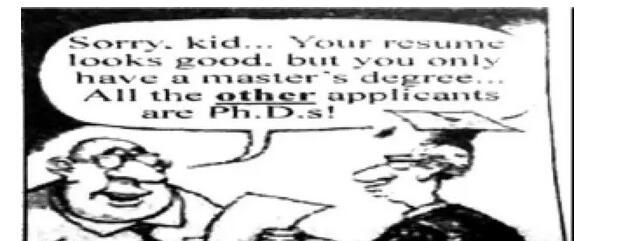2007版--翻译(强化)-1
第一部分 英译汉全真试题(1994-2004年)Passage 1
According to the new school of scientists, technology is an overlooked force in expanding the horizons of scientific knowledge. 71) Science moves forward, they say, not so much through the insights of great men of genius as because of more ordinary things like improved techniques and tools.72) "In short", a leader of the new school contends, "the scientific revolution, as we call it, was largely the improvement and invention and use of a series of instruments that expanded the reach of science in innumerable directions." 73) Over the years, tools and technology themselves as a source of fundamental innovation have largely been ignored by historians and philosophers of science. The modern school that hails technology argues that such masters as Galileo, Newton, Maxwell, Einstein, and inventors such as Edison attached great importance to, and derived great benefit from, craft information and technological devices of different kinds that were usable in scientific experiments. The centerpiece of the argument of a technology-yes, genius-no advocate was an analysis of Galileo's role at the start of the scientific revolution. The wisdom of the day was derived from Ptolemy, an astronomer of the second century, whose elaborate system of the sky put Earth at the center of all heavenly motions. 74) Galileo's greatest glory was that in 1609 he was the first person to turn the newly invented telescope on the heavens to prove that the planets revolve around the sun rather than around the Earth. But the real hero of the story, according to the new school of scientists, was the long evolution in the improvement of machinery for making eyeglasses. Federal policy is necessarily involved in the technology vs. genius dispute. 75) Whether the Government should increase the financing of pure science at the expense of technology or vice versa often depends on the issue of which is seen as the driving force. Passage 2 www.etestedu.com The standardized educational or psychological tests that are widely used to aid in selecting, classifying, assigning, or promoting students, employees, and military personnel have been the target of recent attacks in books, magazines, the daily press, and even in congress. 71) The target is wrong, for in attacking the tests, critics divert attention from the fault that lies with ill-informed or incompetent users. The tests themselves are merely tools, with characteristics that can be measured with reasonable precision under specified conditions. Whether the results will be valuable, meaningless, or even misleading depends partly upon the tool itself but largely upon the user. All informed predictions of future performance are based upon some knowledge of relevant past performance: school grades research productive, sales records, or whatever is appropriate. 72) How well the predictions will be validated by later performance depends upon the amount, reliability, and appropriateness of the information used and on the skill and wisdom with which it is interpreted. Anyone who keeps careful score knows that the information available is always incomplete and that the predictions are always subject to error. Standardized tests should be considered in this context. They provide a quick, objective method of getting some kids of information about what a person learned, the skills he has developed, or the kinds of person he is. The information so obtained has, qualitatively, the same advantages and shortcomings as other kinds of information. 73) Whether to use tests, other kinds of information, or both in a particular situation depends, therefore, upon the evidence from experience concerning comparative validity and upon such factors as cost and availability. 74) In general, the tests work most effectively when the qualities to be measured can be most precisely defined and least effectively when what is to be measured or predicted can not be well defined. Properly used, they provide a rapid means of getting comparable information about many people. Sometimes they identify students whose high potential has not been previously recognized, but there are many things they do not do. 75. For example, they do not compensate for gross social inequality, and thus do not tell how able an underprivileged youngster might have been had he grown up under more favorable circumstances.
Passage3 The differences in relative growth of various areas of scientific research have several causes. 71) Some of these causes are completely reasonable results of social needs. Others are reasonable consequences of particular advances in science being to some extent self-accelerating. Some, however, are less reasonable processes of different growth in which preconceptions of the form scientific theory ought to take, by persons in authority, act to alter the growth pattern of different areas. This is a new problem probably not yet unavoidable; but it is a frightening trend. 72) This trend began during the Second World War, when several governments came to the conclusion that the specific demands that a government wants to make of its scientific establishment cannot generally be foreseen in detail. It can be predicted, however, that from time to time questions will arise which will require specific scientific answers. It is therefore generally valuable to treat the scientific establishment as a resource or machine tomb kept in functional order. 73) This seems mostly effectively done by supporting a certain amount of research not related to immediate goals but of possible consequence in the future. This kind of support, like all government support, requires decisions about the appropriate recipients of funds. Decisions based on utility as opposed to lack of utility are straightforward. But a decision among projects none of which has immediate utility is more difficult. The goal of the supporting agencies is the praisable one of supporting "good " as opposed to "bad" science, but a valid determination is difficult to make. Generally, the idea of good science tends to become confused with the capacity of the field in question to generate an elegant theory. 74) However, the world is so made that elegant systems are in principle unable to deal with some of the world's more fascinating and delightful aspects. 75) New forms of thought as well as new subjects for thought must arise in the future as they have in the past, giving rise to new standards of elegance. Passage 4 Do animals have rights? This is how the question is usually put. It sounds like a useful, ground-clearing way to start. 71) Actually, it isn't, because it assumes that there is an agreed account of human rights, which is something the world does not have. On one view of rights, to be sure, it necessarily follows that animals have none. 72) Some philosophers argue that rights exist only within a social contract, as part of an exchange of duties and entitlements. Therefore, animals cannot have rights. The idea of punishing a tiger that kills somebody is absurd; for exactly the same reason, so is the idea that tigers have rights. However, this is only one account, and by no means an uncontested one. It denies rights not only to animals but also to some people — for instance, to infants, the mentally incapable and future generations. In addition, it is unclear what force a contract can have for people who never consented to it: how do you reply to somebody who says "I don't like this contract"? The point is this without agreement on the rights of people, arguing about the rights of animals is fruitless. 73) It leads the discussion to extremes at the outset: it invites you to think that animals should be treated either with the consideration humans extend to other humans, or with no consideration at all. This is a false choice. Better to start with another, more fundamental, question: is the way we treat animals a moral issue at all? Many deny it. 74) Arguing from the view that humans are different from animals in every relevant respect, extremists of this kind think that animals lie outside the area of moral choice. Any regard for the suffering of animals is seen as a mistake — a sentimental displacement of feeling that should properly be directed to other humans. This view, which holds that torturing a monkey is morally equivalent to chopping wood, may seem bravely "logical". In fact it is simply shallow: the confused centre is right to reject it. The most elementary form of moral reasoning—the ethical equivalent of learning to crawl — is to weigh others' interests against one's own. This in turn requires sympathy and imagination: without which there is no capacity for moral thought. To see an animal in pain is enough, for most, to engage sympathy. 75) When that happens, it is not a mistake: it is mankind's instinct for moral reasoning in action, an instinct that should be encouraged rather than laughed at. Passage 5 They were, by far, the largest and most distant objects that scientists had ever detected: a strip of enormous cosmic clouds some 15 billion light-years from earth. 71) But even more important, it was the farthest that scientists had been able to look into the past, for what they were seeing were the patterns and structures that existed 15 billion years ago. That was just about the moment that the universe was born. What the researchers found was at once both amazing and expected; the US National Aeronautics and Space Administration's Cosmic Background Explorer satellite — Cobe — had discovered landmark evidence that the universe did in fact begin with the primeval explosion that has become known as the Big Bang (the theory that the universe originated in an explosion from a single mass of energy.) 72) The existence of the giant clouds was virtually required for the Big Bang, first put forward in the 1920s, to maintain its reign as the dominant explanation of the cosmos. According to the theory, the universe burst into being as a submicroscopic, unimaginable dense knot of pure energy that flew outward in all directions, emitting radiation as it went, condensing into particles and then into atoms of gas. Over billions of years, the gas was compressed by gravity into galaxies, stars, plants and eventually, even humans. Cobe is designed to see just the biggest structures, but astronomers would like to see much smaller hot spots as well, the seeds of local objects like clusters and superclusters of galaxies. They shouldn't have long to wait. 73) Astrophysicists working with groundbased detectors at the South Pole and balloon-borne instruments are closing in on such structures, and may report their findings soon. 74) If the small hot spots look as expected, that will be a triumph for yet another scientific idea, a refinement of the Big Bang called the inflationary universe theory. Inflation says that very early on, the universe expanded in size by more than a trillion trillion trillion trillionfold in much less than a second, propelled by a sort of antigravity. 75) Odd though it sounds, cosmic inflation is a scientifically plausible consequence of some respected ideas in elementary-particle physics, and many astrophysicists have been convinced for the better part of a decade that it is true.
Passage 6 71) While there are almost as many definitions of history as there are historians, modern practice most closely conforms to one that sees history as the attempt to recreate and explain the significant events of the past. Caught in the web of its own tune and place, each generation of historians determines anew what is significant for it in the past. In this search the evidence found is always incomplete and scattered; it is also frequently partial or partisan. The irony of the historian's craft is that its practitioners always know that their efforts are but contributions to an unending process. 72) Interest in historical methods has arisen less through external challenge to the validity of history as an intellectual discipline and more from internal quarrels among historians themselves. While history once revered its affinity to literature and philosophy, the emerging social sciences seemed to afford greater opportunities for asking new questions and providing rewarding approaches to an understanding of the past. Social science methodologies had to be adapted to a discipline governed by the primacy of historical sources rather than the imperatives of the contemporary world. 73) During this transfer, traditional historical methods were augmented by additional methodologies designed to interpret the new forms of evidence in the historical study. Methodolgy is a term that remains inherently ambiguous in the historical profession. 74) There is no agreement whether methodology refers to the concepts peculiar to historical work in general or to the research techniques appropriate to the various branches of historical inquiry. Historians, especially those so blinded by their research interests that they have been accused of "tunnel method," frequently fall victim to the "technicist fallacy." Also common in the natural sciences, the technicist fallacy mistakenly identifies the discipline as a whole with certain parts of its technical implementation. 75) It applies equally to traditional historians who view history as only the external and internal criticism of sources, and to social science historians who equate their activity with specific techniques.
Passage 7 Governments throughout the world act on the assumption that the welfare of their people depends largely on the economic strength and wealth of the community. 71) Under modern conditions, this requires varying measures of centralized control and hence the help of specialized scientists such as economists and operational research experts. 72) Furthermore, it is obvious that the strength of a country' s economy is directly bound up with the efficiency of its agriculture and industry, and that this in turn rests upon the efforts of scientists and technologists of all kinds. It also means that governments are increasingly compelled to interfere in these sectors in order to step up production and ensure that it is utilized to the best advantage. For example, they may encourage research in various ways including the setting up of their own research centers; they may alter the structure of education, or interfere in order to reduce the wastage of natural resources or tap resources hitherto unexploited; or they may cooperate directly in the growing number of international projects related to science, economics and industry. In any case, all such interventions are heavily dependent on scientific advice and also scientific and technological manpower of all kinds. 73) Owing to the remarkable development in mass-communications, people everywhere are feeling new wants and are being exposed to new customs and ideas, while governments are often forced to introduce still further innovations for the reasons given above. At the same time the normal rate of social change throughout the world is taking place at a vastly accelerated speed compared with the past. For example, 74) in the early industrialized countries of Europe the process of industrialization — with all the far-reaching changes in social patterns that followed — was spread over nearly a century, whereas nowadays a developing nation may undergo the same process in a decade or so. All this has the effect of building up unusual pressures and tensions within the community and consequently presents serious problems for the governments concerned. 75) Additional social stresses may also occur because of the population explosion or problems arising from mass migration movements — themselves made relatively easy nowadays by modern means of transport. As a result of all these factors, governments are becoming increasingly dependent on biologists and social scientists for planning the appropriate programs and putting them into effect. Passage 8 In less than 30 years' time the Star Trek holodeck will be a reality. Direct links between the brain' s nervous system and a computer will also create full sensory virtual environments, allowing virtual vacations like those in the film Total Recall. 71) There will be television chat shows hosted by robots, and cars with pollution monitors that will disable them when they offend. 72) Children will play with dolls equipped with personality chips, computers with in-built personalities will be regarded as workmates rather than tools, relaxation will be in front of smell-television, and digital age will have arrived. According to BT' s futurologist, Ian Pearson, these are among the developments scheduled for the first few decades of the new millennium (a period of 1,000 years), when supercomputers will dramatically accelerate progress in all areas of life. 73) Pearson has pieced together the work of hundreds of researchers around the world to produce a unique millennium technology calendar that gives the latest dates when we can expect hundreds of key breakthroughs and discoveries to take place. Some of the biggest developments will be in medicine, including an extended life expectancy and dozens of artificial organs coming into use between now and 2040. Pearson also predicts a breakthrough in computer-human links. "By linking directly to our nervous system, computers could pick up what we feel and, hopefully, simulate feeling too so that we can start to develop full sensory environments, rather like the holidays in Total Recall or the Star Trek holodeck," he says. 74) But that, Pearson points out, is only the start of man-machine integration: "It will be the beginning of the long process of integration that will ultimately lead to a fully electronic human before the end of the next century." Through his research, Pearson is able to put dates to most of the breakthroughs that can be predicted. However, there are still no forecasts for when faster-than-light travel will be available, or when human cloning will be perfected, or when time travel will be possible. But he does expect social problems as a result of technological advances. A boom in neighborhood surveillance cameras will, for example, cause problems in 2010, while the arrival of synthetic lifelike robots will mean people may not be able to distinguish between their human friends and the droids. 75) And home appliances will also become so smart that controlling and operating them will result in the breakout of a new psychological disorder — kitchen rage.
Passage 9 Almost all our major problems involve human behavior, and they cannot be solved by physical and biological technology alone. What is needed is a technology of behavior, but we have been slow to develop the science from which such a technology might be drawn. 61) One difficulty is that almost all of what is called behavioral science continues to trace behavior to states of mind, feelings, traits of character, human nature, and so on. Physics and biology once followed similar practices and advanced only when they discarded them. 62) The behavioral sciences have been slow to change partly because the explanatory items often seem to be directly observed and partly because other kinds of explanations have been hard to find. The environment is obviously important, but its role has remained obscure. It does not push or pull, it selects, and this function is difficult to discover and analyze. 63) The role of natural selection in evolution was formulated only a little more than a hundred years ago, and the selective role of the environment in shaping and maintaining the behavior of the individual is only beginning to be recognized and studied. As the interaction between organism and environment has come to be understood, however, effects once assigned to states of mind, feelings, and traits are beginning to be traced to accessible conditions, and a technology of behavior may therefore become available. It will not solve our problems, however, until it replaces traditional prescientific views, and these are strongly entrenched. Freedom and dignity illustrate the difficulty. 64) They are the possessions of the autonomous (self-governing) man of traditional theory, and they are essential to practices in which a person is held responsible for his conduct and given credit for his achievements. A scientific analysis shifts both the responsibility and the achievement to the environment. It also raises questions concerning "values". Who will use a technology and to what ends? 65) Until these issues are resolved, a technology of behavior will continue to be rejected, and with it possibly the only way to solve our problems. Passage 10 Human beings in all times and places think about their world and wonder at their place in it. Humans are thoughtful and creative, possessed of insatiable curiosity. (61) Furthermore, humans have the ability to modify the environment in which they live, thus subjecting all other life forms to their own peculiar ideas and fancies. Therefore, it is important to study humans in all their richness and diversity in a calm and systematic manner, with the hope that the knowledge resulting from such studies can lead humans to a more harmonious way of living with themselves and with all other life forms on this planet Earth. "Anthropology" derives from the Greek words anthropos "human" and logos "the study of." By its very name, anthropology encompasses the study of all humankind. Anthropology is one of the social sciences. (62) Social science is that branch of intellectual enquiry which seeks to study humans and their endeavors in the same reasoned, orderly, systematic, and dispassioned manner that natural scientists use for the study of natural phenomena. Social science disciplines include geography, economics, political science, psychology, and sociology. Each of these social sciences has a subfield or specialization which lies particularly close to anthropology. All the social sciences focus upon the study of humanity. Anthropology is a field-study oriented discipline which makes extensive use of the comparative method in analysis. (63) The emphasis on data gathered first-hand, combined with a cross-cultural perspective brought to the analysis of cultures past and present, makes this study a unique and distinctly important social science. Anthropological analyses rest heavily upon the concept of culture. Sir Edward Tylor's formulation of the concept of culture was one of the great intellectual achievements of 19th century science. (64) Tylor defined culture as "... that complex whole which includes belief, art, morals, law, custom, and any other capabilities and habits acquired by man as a member of society." This insight, so profound in its simplicity, opened up an entirely new way of perceiving and understanding human life. Implicit within Tylor's definition is the concept that culture is learned, shared, and patterned behavior. (65) Thus, the anthropological concept of "culture," like the concept of "set" in mathematics, is an abstract concept which makes possible immense amounts of concrete research and understanding. Passage 11 The relation of language and mind has interested philosophers for many centuries. (61) The Greeks assumed that the structure of language had some connection with the process of thought, which took root in Europe long before people realized how diverse languages could be. Only recently did linguists begin the serious study of languages that were very different from their own. Two anthropologist-linguists, Franz Boas Edward Sapir, were pioneers in describing many native languages of North and South America during the first half of the twentieth century. (62) We are obliged to them because some of these languages have since vanished, as the peoples who spoke them died out or became assimilated and lost their native languages. Other linguists in the earlier part of this century, however, who were less eager to deal with bizarre data from "exotic" language, were not always so grateful. (63) The newly described languages were often so strikingly different from the well studied languages of Europe and Southeast Asia that some scholars even accused Boas and Sapir of fabricating their data. Native American languages are indeed different, so much so in fact that Navajo could be used by the US military as a code during World War II to send secret messages. Sapir's pupil, Benjamin Lee Whorf, continued the study of American Indian languages. (64) Being interested in the relationship of language and thought, Whorf developed the idea that the structure of language determines the structure of habitual thought ma society. He reasoned that because the structure of habitual thought in a society. He reasoned that because it is easier to formulate certain concepts and not others in a given language, the speakers of that language think along one track and not along another. (65) Whorf came to believe in a sort of linguistic determinism which, in its strongest form, states that language imprisons the mind, and that the grammatical patterns in a language can produce far-reaching consequences for the culture of a society. Later, this idea became to be known as the Sapir-Whorf hypothesis, but this term is somewhat inappropriate. Although both Sapir and Whorf emphasized the diversity of languages , Sapir himself never explicitly supported the notion of linguistic determinism. Passage 1 71.他们说,科学的发展与其说源于天才伟人的真知灼见,不如说源于改进了的技术和工具等更为变通的东西。 72.新学派的一位领袖人物坚持说:“简言之,我们所谓的科学革命,主要是指一系列器具的改进、发明和使用,这些改进、发明和使用使科学发展的范围无所不及。” 73.工具和技术本身作为根本性创新的源泉多年来在很大程度上被科学史学家和科学思想家们忽视了。 74.伽利略的最光辉的业绩在于他在1609年第一个把新发明的望远镜对准太空,以证实行星是围绕太阳旋转,而不是围绕地球(旋转)。 75.政府究竟是以减少对技术和经费投入来增加对纯理论科学的经费投入,还是相反,这往往取决于把哪一方看作是驱动力量。 Passage 2 71.把标准化测试作为抨击目标是错误的,因为在抨击这类测试时,批评者没有注意到其弊病来自测试使用者对测试不甚了解或使用不当。 72.这些预测在多大程度上为后来的表现所证实,这取决于所采用信息的数量、可靠性和适宜性,以及解释这些信息的技能和才智。 73.因此,在某一特定情况下,究竟是采用测试还是其他种类的信息,或是两者兼用,须凭有关相对效度的经验依据而定,也取决于诸如费用和有关来源等因素。 74.一般来说,当所要测定地特征能很精确界定时,测试最为有效;而当所要测定或预测的东西不能明确地界定时,测试的效果最差。 75.例如,测试并不能弥补明显的社会不公,因此不能说明一个物质条件差的年轻人,如果在较好的环境中成长的话,会有多大才干。 Passage 3 71.在这些原因中,有些完全是自然而然地来自社会需求。另一些则是由于科学在一定程度上自我加速而产生某些特定发展的必然结果。 72.这种趋势始于第二次世界大战期间,当时一些国家的政府得出结论:政府要向科研机构提出的具体要求通常是无法详尽预见的。 73.给某些与当前目标无关但将来可能产生影响的科研以支持,看来通常能有效地解决这一问题。 74.然而,世界就是如此,完美的体系一般而言是无法解决世上某些更加引人入胜的课题的。 75.同过去一样,将来必然会出现新的思维方式和新的思维对象,给完美以新的标准。 Passage 4 71.事实并非如此,因为提出这样的问题是以人们对人的权利有共同认识为基础的,而这种共同认识并不存在。 72.有些哲学家论证说,权利只存在于社会契约中,是责任与权益相交换的一部分。 73.这种说法从一开始就将讨论引向两个极端,它使人们认为应该这样对待动物:要么像对人类自身一样关切体谅,要么完全冷漠无情。 74.这类人持极端看法,认为人与动物在各相关方面都不同,对待动物无须考虑道德问题。 75.这种反应不错,这是人类用道德观念进行推理的本能在起作用。这种本能应得到鼓励,而不应得到嘲弄。
Passage 5 71.但更为重要的是,这是科学家们所能观测到的最遥远的过去的景象。因为他们看到的是150 亿年前宇宙云的形状和结构。 72.巨大的宇宙云的存在,实际上是使20年代首创的大爆炸论得以保持其宇宙起源的主导地位所不可缺少的。 73.天体物理学家使用南极陆基探测器及球载仪器,正越来越近地观测这些云系也许不久会报告他们的观测结果。 74.假如那些小热点看上去同预计的一致,那意味着又一科学论说的胜利,这种论说即更完美的大爆炸论,亦称宇宙膨胀说。 75.宇宙膨胀说虽然听似奇特,但它是基本粒子物理学中的一些公认的理论在科学上看来可信的推论。许多天体学家七、八年来一直公认这一论说是正确的。
Passage 6 71.几乎每个历史学家对史学都有自己的界定,但现代史学家的实践最趋向于认为历史学是试图重现过去的重大史实并对其做出解释。 72.人们之所以关注历史研究方法论,主要是因为史学界内部意见不一,其次是因为外界并不认为历史是一门学问。 73.在这种转变中,历史学家研究历史时,那些解释新史料的新方法充实了传统的历史研究方法。 74.所谓方法论是指一般的历史研究中特有的概念,还是指历史探究中各个领域适用的研究手段,人们对此意见不一。 75 这种谬误同样存在于历史传统派和历史社科派;前者认为历史就是史学界内部和外部人士以各种史料来源的评论,后者认为历史的研究是具体方法的研究。 Passage 7 71. 在现代条件下,这需要程度不同的中央控制,从而就需要获得诸如经济学和运筹学等领域专家的协助。 72.再者,显而易见的是一个国家的经济实力与其工农业生产效率密切相关,而效率的提高则又有赖于各种科技人员的努力。 73.大众通讯的显著发展使各地的人们不断感到有新的需求,不断接触到新的习俗和思想,由于上述原因,政府常常得推出更多的革新。 74.在先期实现工业化的欧洲国家中,其工业化进程以及随之而来的各种深刻的社会结构变革,持续了大约一个世纪之久,而如今一个发展中国家在十年左右就可能完成这个过程。 75.由于人口的猛增或大量人口流动(现代交通工具使这种流动相对容易)造成的种种问题也会对社会造成新的压力。 Passage 8 71.届时,将出现由机器人主持的电视谈话节目以及将有污染监控器的汽车,一旦这些汽车排污超标(违规),监控器就会使其停驶。 72.儿童将与将有个性芯片的玩具娃娃玩耍,具有个性内置的计算机将被视为工作伙伴而不是工具,我们将在气味电视机前休闲,届时数字化时代就来到了。 73.皮尔林汇集世界各地数百位研究人员的成果,编制了一个独特的新技术干千年历,它列出了人们有望看到的数百项重大突破的发现的最迟日期。 74.皮尔林指出,这个突破仅仅是人机一体化的开始:“它是人机一体化漫长之路的第一步,最终会使人们在下世纪末之前就研制出安全电子化的仿真人。” 75.家用电器将会变得如此智能化,以至于控制和操作它们会引发一种新的心理疾病——厨房狂躁。 Passage 9 61.难题之一在于所谓的行为科学几乎全都依靠从心态、情感、性格特征、人性等方面去寻找行为的根源。 62.行为科学之所以发展缓慢,部分原因是用来解释行为的依据似乎往往是直接观察到的,部分原因是其他的解释方式一直难以找到。 63.自然选择在进化中的作用仅在一百多年前才得以阐明,而环境在塑造和保持久体行为时的选择作用则刚刚开始被认识和研究。 64.自由和尊严(它们)是传统理论定义的自主人所拥有的,是要求一个人对自己的行为负责并因其业绩而给予肯定的必不可少的前提。 65.(如果)这些问题得不到解决,研究行为的技术手段就会继续受到排斥,解释问题的唯一方式可能也随之继续受到排斥。
Passage 10 61.而且,人类还有能力改变自己的生存环境,从而让所有其它形态的生命服从人类自己独特的想法和想象。 62.社会科学是知识探索的一个分支,它力图像自然科学家研究自然现象那样,用理性的、有序的、系统的和冷静的方式研究人类及其行为。 63.强调收集第一手资料,加上在分析过去和现在文化形态时采用跨文化视角,使得这一研究成为一门独特并且非常很重要的社会科学。 64.泰勒:“……一个复合整体,它包括人作为社会成员所获得的信仰、艺术、道德、法律、风俗以及其它能力和习惯。 65.因此,人类学中的“文化”概念就像数学中“集”的概念一样,是一个抽象概念,它使大量的具体研究和认识成为可能。 Passage 11 61.希腊人认为,语言结构与思维过程之间存在着某种联系。这一观点在人们尚未认识到语言的千差万别以前就早已在欧洲扎下了根。 62.我们之所以感激他们(两位先驱),是因为在此之后,这些(土著)语言中有一些已经不复存在了,这是由于说这些语言的部族或是消亡了,或是被同化而丧失了自己的本族语言。 63.这些新近被描述的语言得到充分研究的欧洲和东南亚地区的语言往往差别显著,以至于有些学者甚至指责伯阿斯和萨丕尔编造了材料。 64.沃夫对语言与思维的关系很感兴趣,逐渐形成了这样的观点:在一个社会中,语言的结构决定习惯思维的结构。 65.沃夫进而相信某种类似语言决定论的观点,其极端说法是:语言禁锢思维,语言的语法结构能对一个社会的文化产生深远的影响。 |








